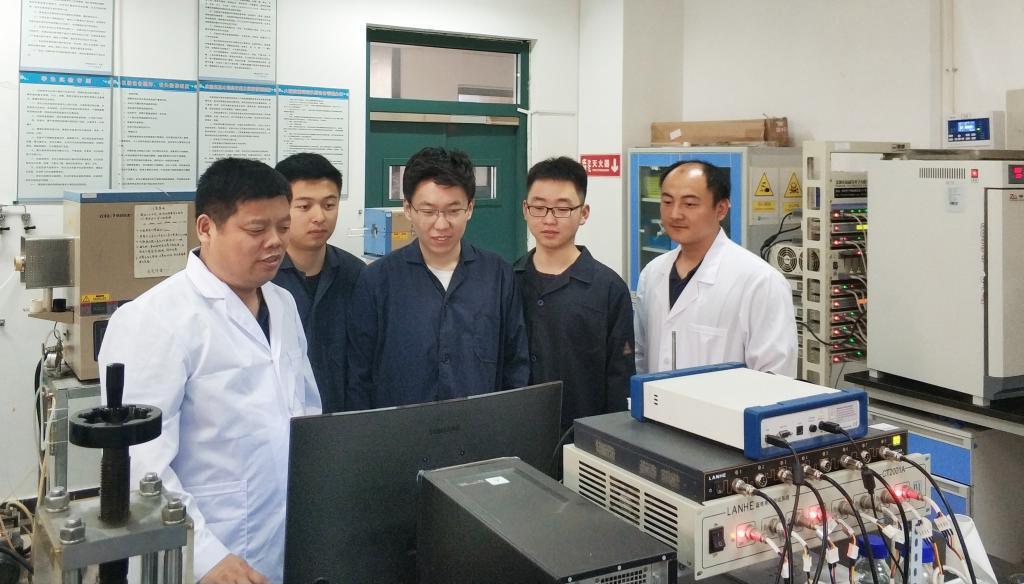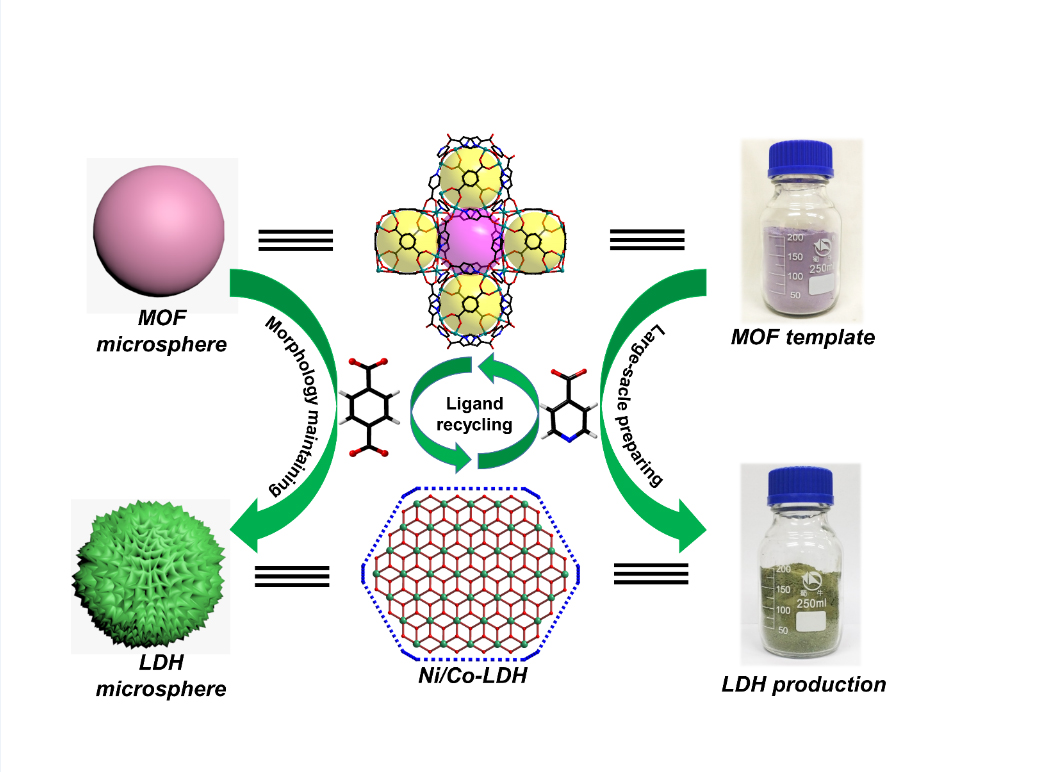Recently, Prof. Sun Daofeng’s group from School of Materials Science and Engineering has made a breakthrough in the preparation of supercapacitor electrode materials via controlled alkali hydrolysis of MOFs, by cooperated with Prof. Zhou Hongcai of Texas A&M University. Related thesis:Controlled Hydrolysis of Metal–Organic Frameworks: Hierarchical Ni/Co-Layered Double Hydroxide Microspheres for High Performance Supercapacitorswas published by the leading international journalACS Nanoin June 2019. Xiao Zhenyu, a doctor of our school, and Mei Yingjie, a master student, are the co-first authors. Professor Sun Daofeng and Prof. Zhou Hongcai are co-corresponding authors. University of Petroleum China is the first signatory unit.

In recent years, metal-organic frameworks (MOFs) have been considered as an ideal precursors to construction nano-oxides, porous carbon and composite materials for their high specific surface area, abundant pore structure and highly dispersed metal centers. Until now, the preparation methods of MOFs-derived materials are limited in the traditional pyrolysis strategy. Due to the high reaction temperature, the reaction process is complicated and less controllable, as well as sensitive to the gas environment, therefore a serious disadvantage proecss will occur, such as framework collapse, metal center agglomeration, pore structure blockage. Meanwhile, the pyrolysis process will inevitably lead to the decomposition of expensive organic ligands, as well as the emission of toxic and harmful gases. The economic and environmental costs are expensive, which limit its large-scale industrial application.


Based on the aforementioned issues, Sun's group used alkaline hydrolysis (hydrolysis under alkaline conditions) strategy to gradually replace organic ligand anions in MOFs by OH-anions. In this way, a mild and controlled process was achieved to fabricate MOFs-derived nanomaterials. The isotope tracking technique was used to trace the reaction process for the first time, and the reaction mechanism was explored. The results show that the μ3-OH bridging metal clusters in MOFs play an important role in the process of “conformal transformation”. Controlled alkaline hydrolysis provides effective guidance for other MOFs derived materials. The optimized Ni/Co-LDH-7:3 sample demonstrates excellent supercapacitor performance, which may contribute to their unique microporous-mesoporous composite pore structure, ultra-high specific surface area and synergistic effect of Ni/Co element. An high specific capacity of 1652 Fg-1was achieved at a current density of 1 A g-1. Otherwise, the organic ligand anions can be recycled by acidification process, which can reduce pollution and production costs. This gentle, controlled and economical synthesis strategy can be extended to other bimetallic systems to provide guidance for the electrochemical application of functional MOFs derivatives.
Translated by: Mei Yingjie
